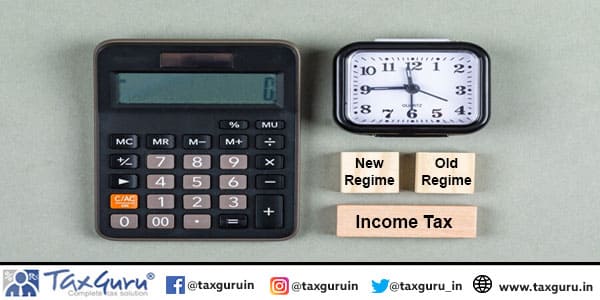Income Tax: The New vs. Old Regime or Salaried Individuals and Proprietorship Business Owners
The Union Budget 2023, especially with the introduction of a new tax regime, caused confusion among taxpayers regarding the choice between the former and latter regimes. With various incentives introduced in the budget for income tax filing, the government clearly encouraged the adoption of a new regime and eventually phased out the previously active one.
The income tax system has undergone radical changes with the introduction of the new income tax regime. The changes came in the form of a ray of hope for many but have also left a multitude perplexed during their income tax filing. To clarify the confusion, and to help all taxpayers out there with the correct insights and numbers, today we have come up with an enriching article on the discussions around the tax regime.
Though the interim budget has been rolled out recently, no changes were introduced in the direct taxes. Therefore, we can easily move on to our comparison in the tax regimes.
So let’s delve into the details, which will help you in making an informed decision.
Page Contents
Understanding the New Income Tax Regime
The modern tax regime put forth in the 2020 union budget, was an audacious move of the government to simplify the tax structure, and with the altered tax slab it was mainly aimed at easing the life of the lower income individuals.
Though there were concessional tax rates but had a catch as well! For this tax regime, one could not claim several exemptions viz. HRA, LTA, Section 80C, and Section 80Dduring their income tax filing.
The rationale behind the revised structure was to offer relief to taxpayers who were not investing in tax-saving instruments. With the lower tax rates, the aim was to have more disposable income at hand, thereby potentially encouraging consumption and economic growth as a result.
Major amendments in the new income tax regime:
The 4 major changes introduced in the new income tax regime are as follows:
Compared to the previous number of 5 lakh INR per annum, the new tax regime offered a full tax rebate on an income of up to 7 lakh INR per annum.
With the revised tax slab, the tax exemption limit has been increased to 3 lakh INR.
A standard deduction and the family pension deduction of 50,000 INR are now available.
For the income over 5 crore INR, the surcharge rate has been reduced to 25% from the previous value of 37%.

A Closer Look at the Old Regime
It has been estimated that there were over 70 exemptions & deductions available in the old regime!
For different deductions & exemptions, the old tax regime has been the conventional choice for taxpayers. Through investments, expenses, and other tax-reduction tools, this regime allowed a significant reduction in taxable income.
Therefore, it is easier to conclude that the old tax regime was particularly beneficial for the higher income group- who were savvy financially and were investing strategically.
Choosing between old and new tax regime
The important factors to take into account during the regime selection are exemptions & deductions allowed in the old one. The net taxable income is calculated after deducing all the eligible exemptions. And, by quantifying the tax liability on the basis of this net taxable income, it becomes easier to compare with the tax liability under the new regime.
It is obvious (and logical) to select the regime with a lower tax liability, and it is also essential to select or inform the employer (if they file the taxes) so that the TDS can be deducted from the salary correctly.
If the losses are being incurred from capital gains, properties, or the business, then they all need to be considered equally before selecting the right regime for you.
The Breakeven Point
An amount for which there will be no difference in the tax liability for both regimes is called the breakeven point or the breakeven threshold.
So, if all the deductions as per the old regime are higher than the breakeven point for current income then it is prudential to stay in the old regime. If the breakeven point is higher, then the benefit would be in opting for the new regime.
In a nutshell
The discrepancies in these two regimes have confused the masses, and to unravel the mystery one must look into the pros & cons of both with a perspective of personal advantage.
The old regime was fabricated in a way to instill a habit of investment among taxpayers. While the new one put employees with lower earnings & less investments at the advantage. For this, the newly introduced system is being considered simpler & safer with fewer records that also minimize the potentialities of tax evasion & fraud.
As the deductions & exemptions vary from person to person, it is highly advised to have a thorough comparison and brainstorming.
In case you are having trouble in finalizing your decision in regards to the selection of tax regime then please feel free to connect anytime. Our specialized team of the experts will help you steer out of all the challenges sang-froid!




